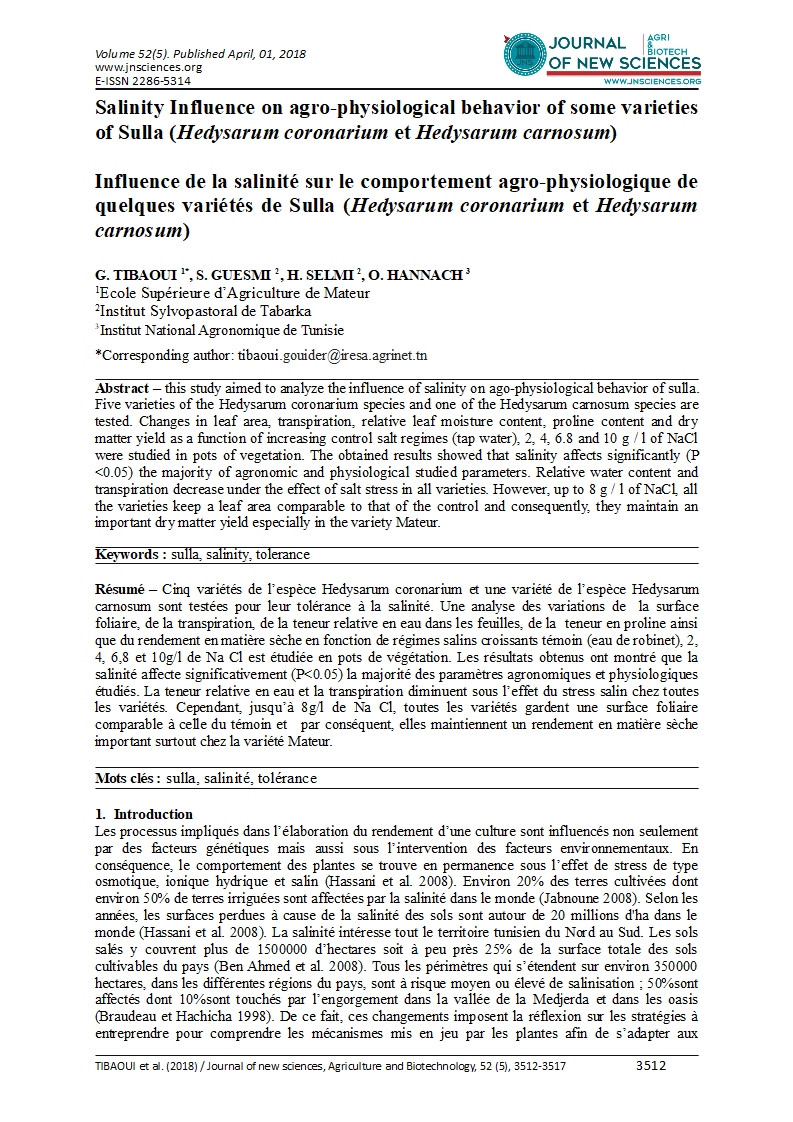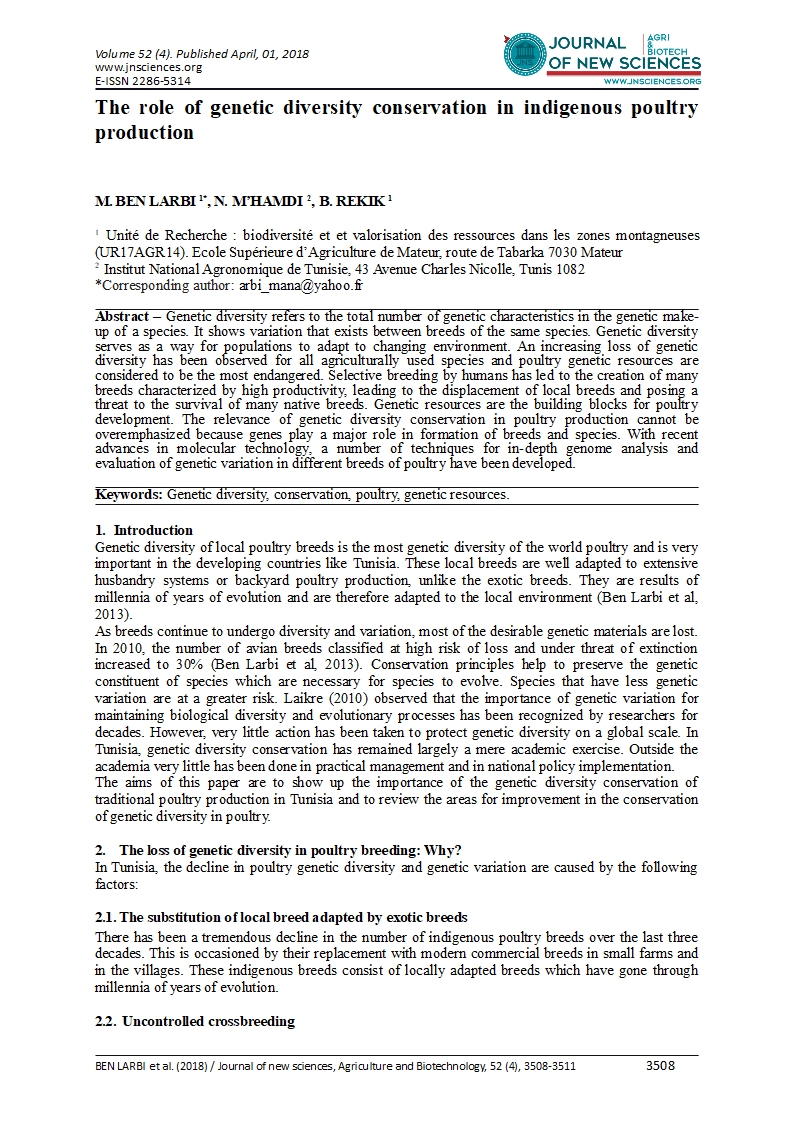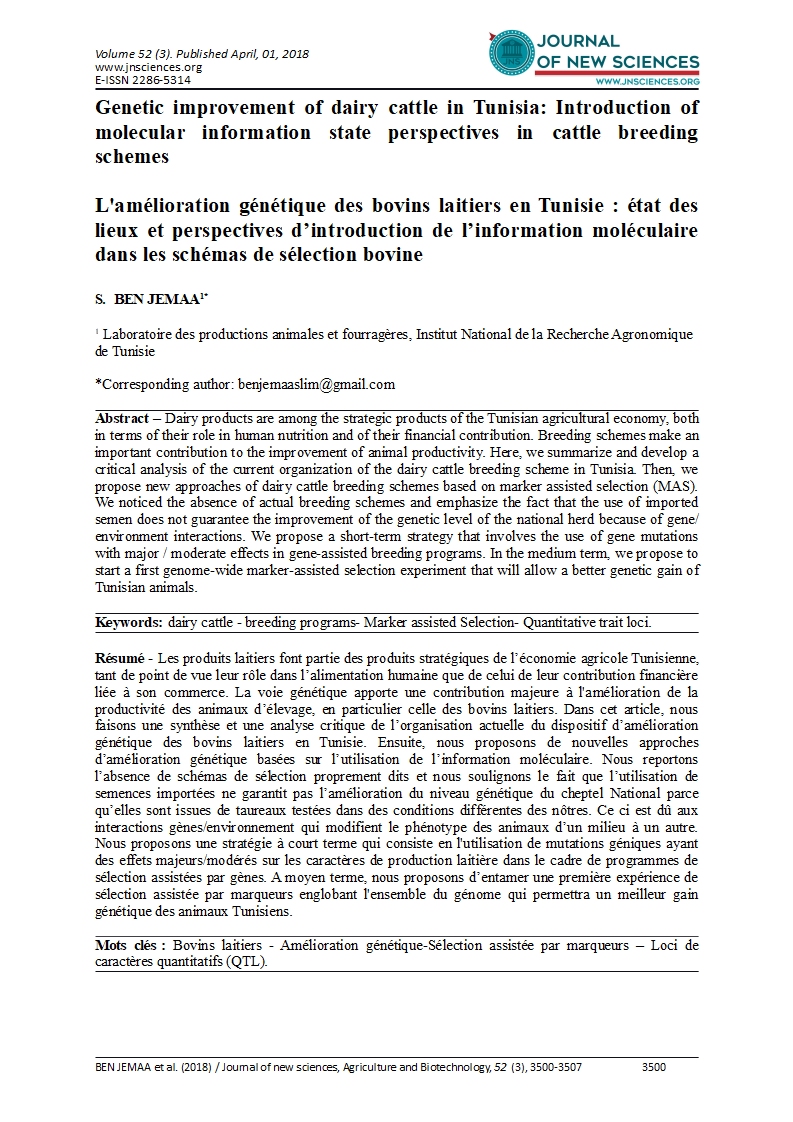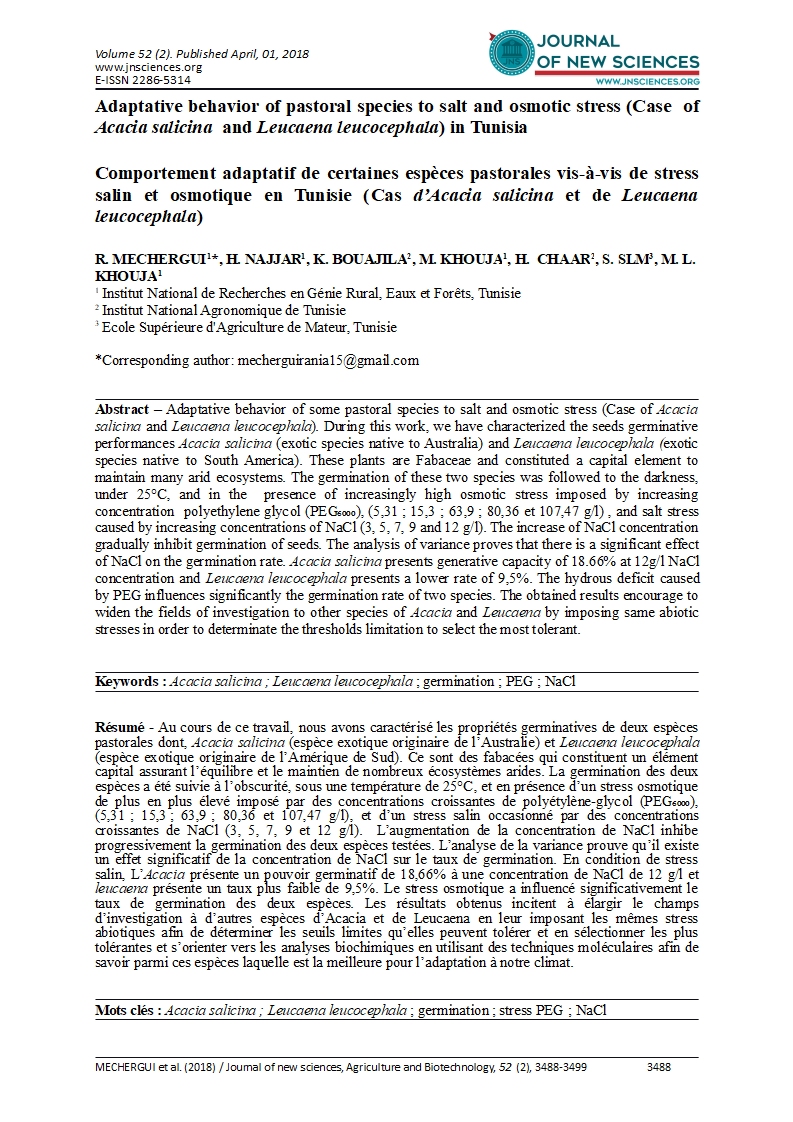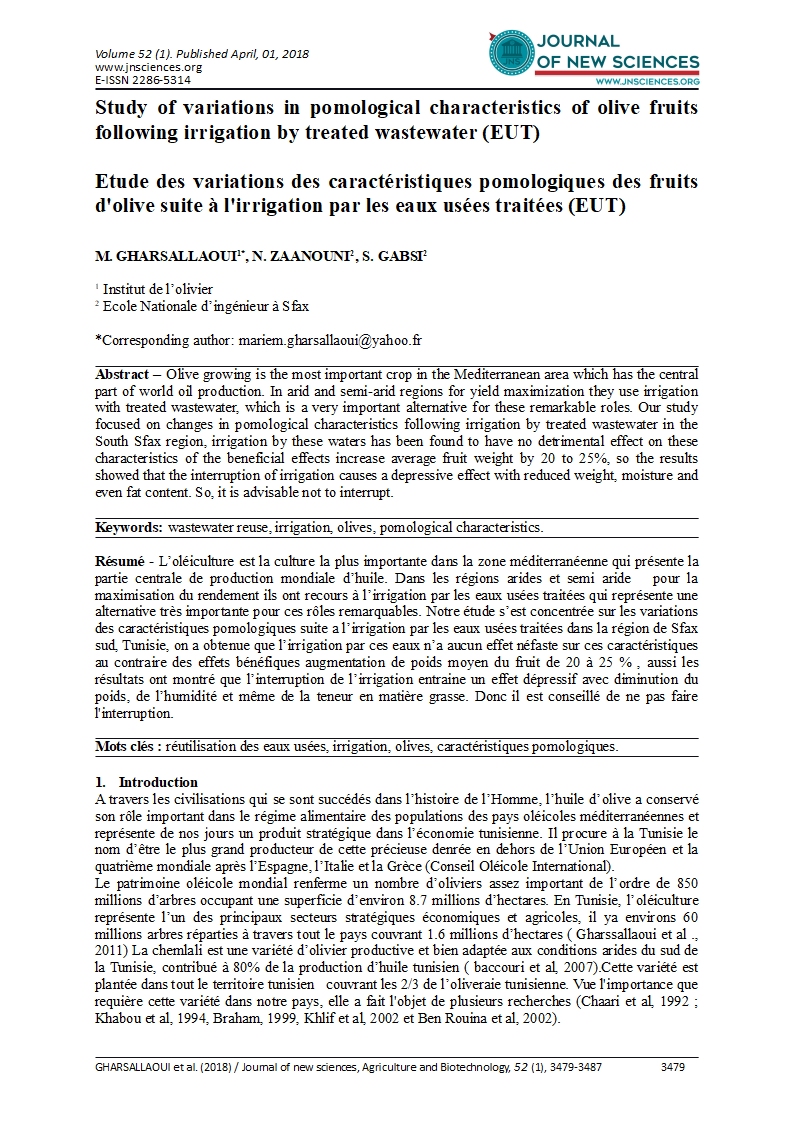- Category: Volume 52
- Hits: 4211
Evaluation of agronomic performances and nutritive value of some barley lines resistant to Barley yellow dwarf virus (BYDV)
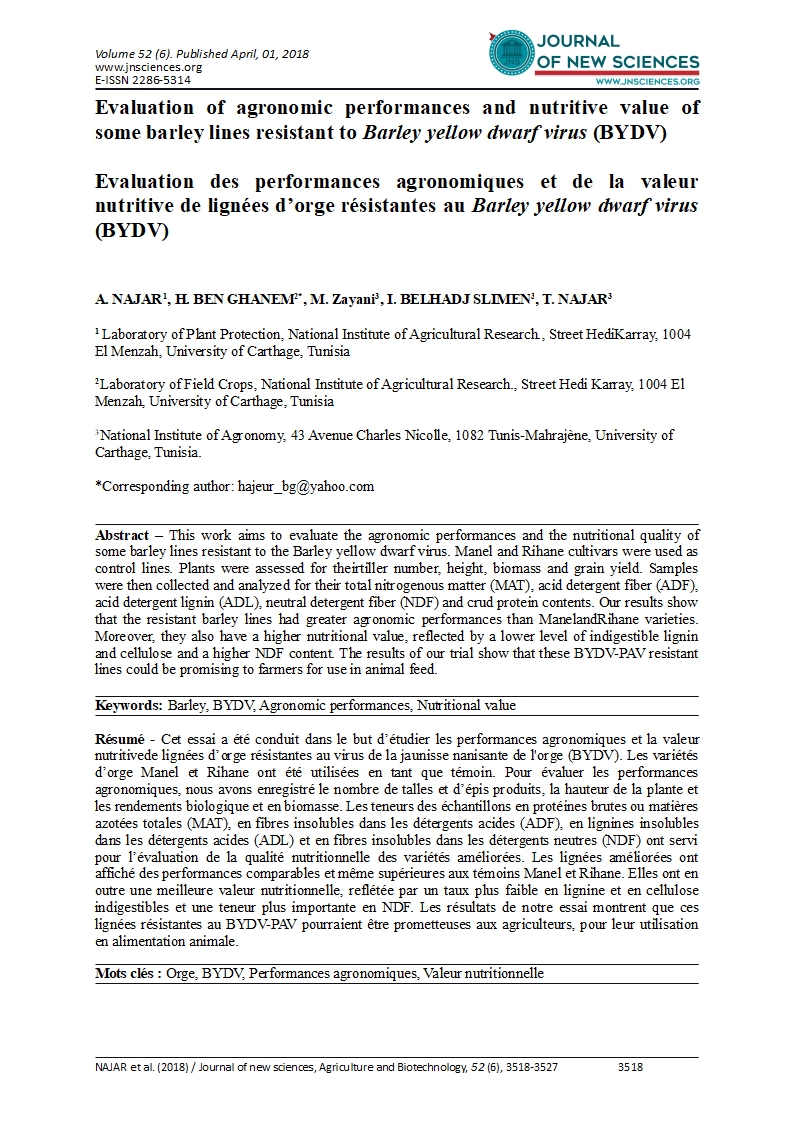
Evaluation des performances agronomiques et de la valeur nutritive de lignées d’orge résistantes au Barley yellow dwarf virus (BYDV)
A. NAJAR1
H. BEN GHANEM2*
M. Zayani3
I. BELHADJ SLIMEN3
T. NAJAR3
1 Laboratory of Plant Protection, National Institute of Agricultural Research., Street HediKarray, 1004 El Menzah, University of Carthage, Tunisia
2Laboratory of Field Crops, National Institute of Agricultural Research., Street Hedi Karray, 1004 El Menzah, University of Carthage, Tunisia
3National Institute of Agronomy, 43 Avenue Charles Nicolle, 1082 Tunis-Mahrajène, University of Carthage, Tunisia.
Abstract – This work aims to evaluate the agronomic performances and the nutritional quality of some barley lines resistant to the Barley yellow dwarf virus. Manel and Rihane cultivars were used as control lines. Plants were assessed for theirtiller number, height, biomass and grain yield. Samples were then collected and analyzed for their total nitrogenous matter (MAT), acid detergent fiber (ADF), acid detergent lignin (ADL), neutral detergent fiber (NDF) and crud protein contents. Our results show that the resistant barley lines had greater agronomic performances than ManelandRihane varieties. Moreover, they also have a higher nutritional value, reflected by a lower level of indigestible lignin and cellulose and a higher NDF content. The results of our trial show that these BYDV-PAV resistant lines could be promising to farmers for use in animal feed.
Keywords: Barley, BYDV, Agronomic performances, Nutritional value

